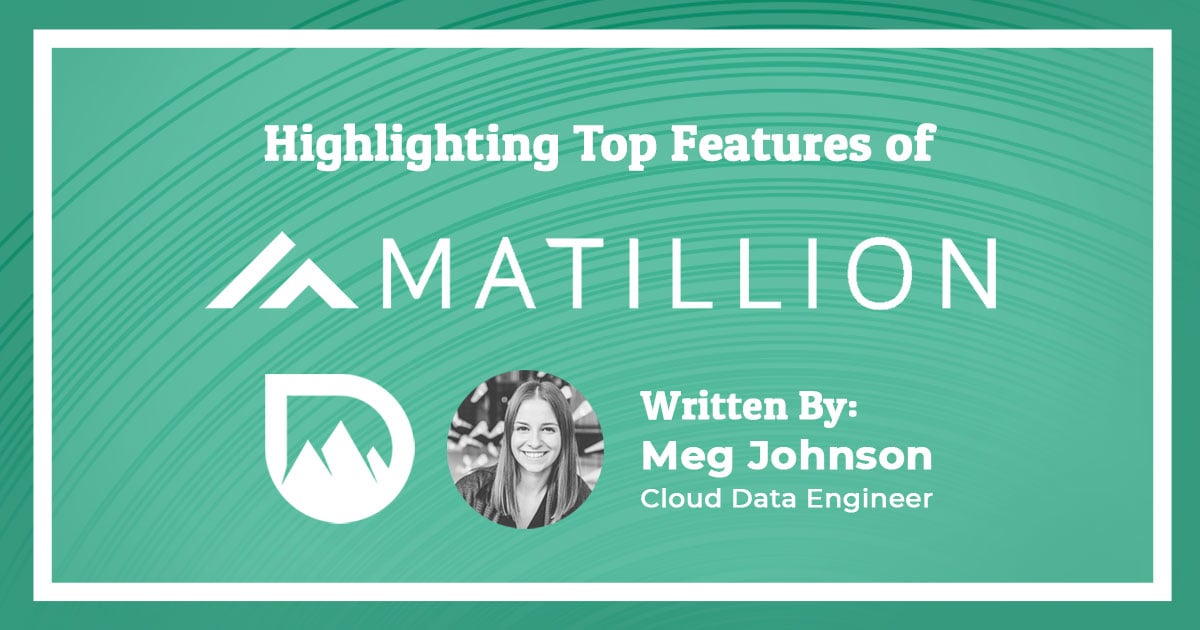Tableau Conference 2025 | Know Before You Go
If you’re a data enthusiast, analytics professional, or just someone curious about Tableau’s latest innovations, the Tableau Conference 2025 is your...

Matillion is one of my favorite ETL tools that I have discovered in my analytics journey. It’s a cloud-based platform that can be hosted on AWS, Azure, or GCP. It can be leveraged to automate workflows that pull in data from various sources, load them to the desired storage location, and also use low code components to transform data.
There are a few different features of the platform that differentiate it from other similar tools. If your organization is looking for an ETL tool to help scale out analytics, Matillion should definitely be on your radar. In this blog, I’m going to be sharing my 5 favorite Matillion features to help explain why:
Many organizations utilize operational or transactional systems that are unique to their industry. These systems often provide REST APIs to allow their customers access to their data. Not every tool provides a simple point of access for these API endpoints, but Matillion has an extremely user-friendly interface for pulling information from all API-enabled systems.
Their documentation walks through step by step on how to set up the GET request. I recommend closely utilizing the documentation for the API, as it usually contains helpful information for authentication, parameters, and pagination.
Matillion ETL allows you to store values or a list of values as variables that can be used in other components or jobs. This has been immensely helpful when it comes to storing date values or authentication details that can be used as filters or parameters in multiple places. You can also store job metadata as variables for data quality testing purposes.
Once you have set up all of your jobs to refresh each data source on a regular schedule, it’s important to find a way to monitor the job in order to minimize the risk of errors or stale data. Matillion offers a handy menu option to enable Error Reporting using webhooks.
I like this option because you can have these messages sent to a designated Slack channel or Google Chat space, rather than allow system emails to get buried in your inbox. You can customize the message to be sent using job variables including the Job Name, Component Name, Error Message, and more.
This is a new area of focus for Matillion. I had not done much research or exploration into this area before a client had a need to sync some of their data sources on a daily basis. The output components in Matillion allow you to output data from a job to an external location.
This is a great feature if you plan to regularly use Matillion as a data loader and have to load data manually to another database or if you need to update records in a CRM or ERP platform. They currently support unloading data to Cloud storage buckets, Intercom, Microsoft SQL Server, Oracle, Pardot, RDS, and Salesforce, among others.
This is more of a highlight of the Matillion interface rather than a specific feature, but it is probably one of the most impactful for organizations with limited developer resources, especially small businesses. Each component in Matillion has easy-to-use prompts that do not require an experienced developer to get them set up. It allows your team to get comfortable with the tool quickly and speed up the implementation process.
In addition to this, each component also provides the underlying SQL scripts which can be used for future development or as a training tool.
Each of these features makes the process of ETL much easier to manage and maintain over time. If you are looking for a solution to extract and transform your organization’s data, I would strongly recommend you add Matillion ETL to your list of contenders!
-2.gif)
If you’re a data enthusiast, analytics professional, or just someone curious about Tableau’s latest innovations, the Tableau Conference 2025 is your...

Tableau Plus is the new premium offering from Tableau, a leading data visualization and business intelligence platform. It builds upon the...

If you've spent any time working with Tableau, you've likely encountered the dreaded "Cannot Mix Aggregate and Non-Aggregate Arguments" error. It's a...